Hi everyone, Michael here with a look at how to unit coherency will change in 9th edition 40k. For more reviews and analyses, check out the Tactics Corner.
One of the biggest changes we have seen so far to 9th edition has been the change to unit coherency rules.

These rules will have larger effect for units of over 5 models. The change means that your model will need to be in range of at least two other models from the unit. This has effectively eliminated the “conga-line” way of deploying and screening out enemy units.
Let’s take a look at a unit of 10 Space Marine Intercessors. Under 8th edition rules, you had to have each model within 2″ of another model in the unit to maintain unit coherency. This gave a unit of 10 models a massive footprint on the battlefield.

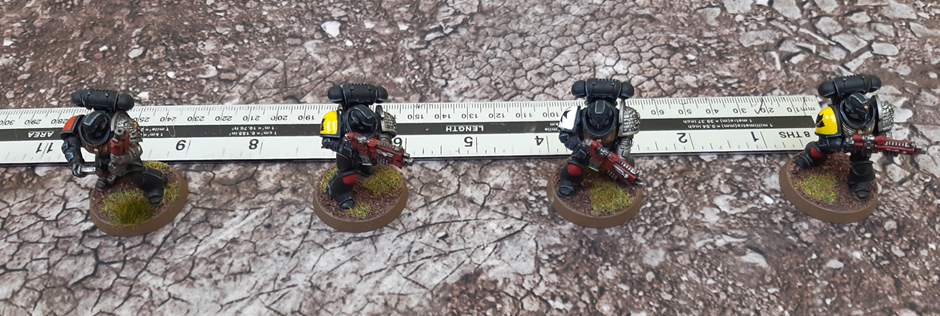
A unit of 10 Intercessors can span a line around 28″ in length, allowing them to hold a line over 2 feet long.
Under the new rules, a unit of over 5 models will no longer be able to conga-line in such a fashion, as the end models will not be in range of 2 other models in the unit.
Arrow Formation
With this in mind, unit formations will need to change in 9th edition. A popular initial discussion online was to use an arrow-type formation, where you have an extra model at the end of each line in order to maintain the coherency. For example, as shown below:

This formation follows the new coherency rules, as the extra model at either end allows this three-man triangle to allow the end models to be in distance to two others in the unit. This unit has a reduced length of around 22″.
However, the flaw with this new formation becomes apparent once you start to remove casualties. Say your unit takes fire and one model is removed from the end of the unit.


Under the new coherency rules, the model at the end of the unit no longer has unit coherency. In the morale phase, you will need to remove the end model. Now the next model is no longer in coherency, and so on.
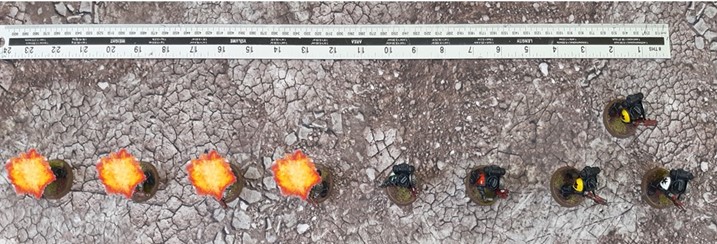
Before you know it, your single casualty has caused you to remove 5 models from the unit. Once they reach 5 models, they are no longer subject to the “2 model rule” and the unit is safe.

This formation could still be useful for covering a lot of ground, either to hold objectives, screen out enemy units or protect characters. However, there are inherent risks to such a drawn out unit profile. If you have access to stratagems preventing the unit from being targeted by enemy firepower unless they are the closest, or can hide them out of line of sight, this could still be a valuable formation to adopt.
Diamond Formation
Another potential formation is the use of a diamond. This consists of alternating one and two models in the unit, all maintaining coherency with one another.

With this formation, you will cover a length of around 17″. While still a significant footprint for a unit, it is a reduction in length of about 40% compared to the same unit in 8th edition.
With this formation, you can take up to three casualties and still maintain unit coherence with the squad.
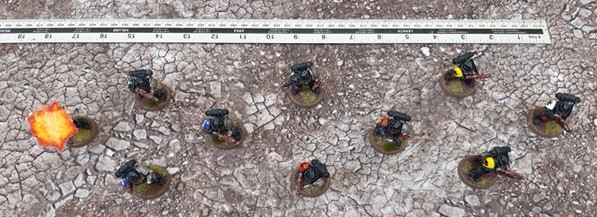
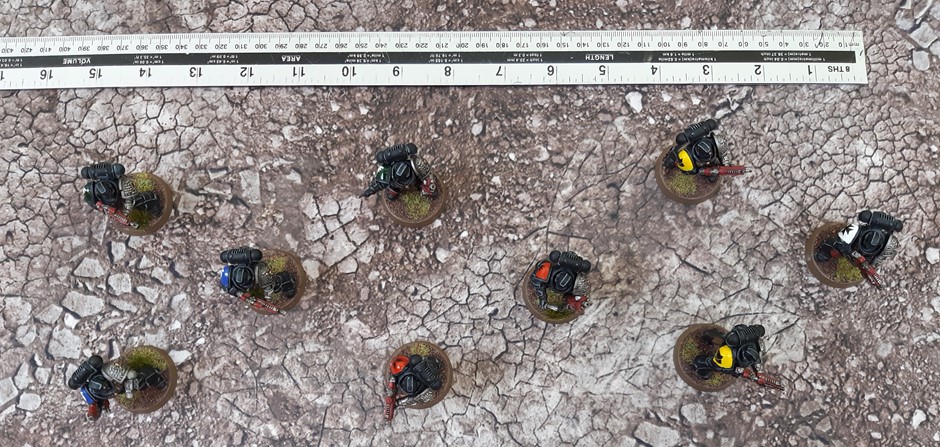
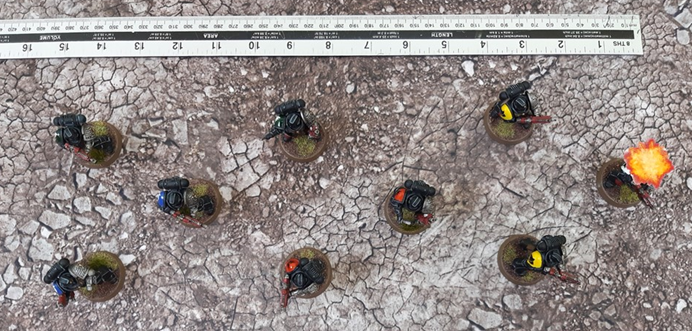
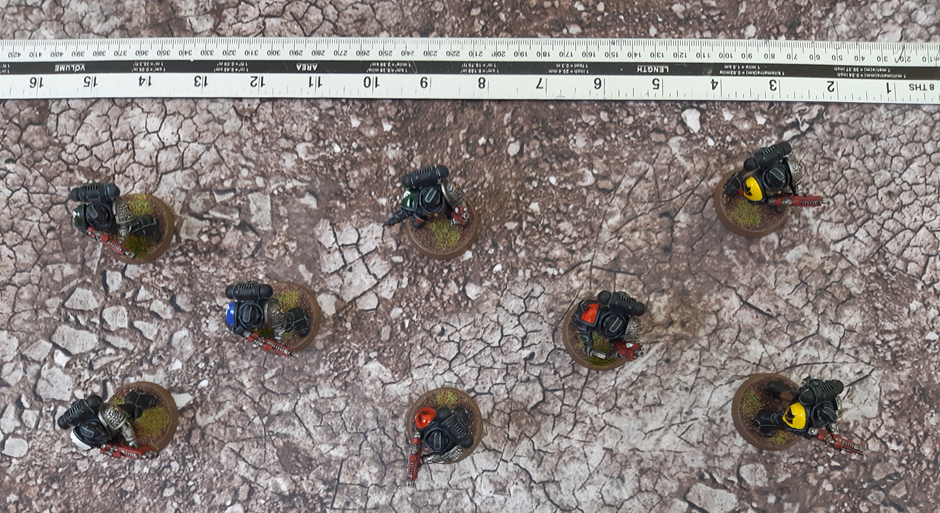


However, removal of the fourth casualty presents a problem, as you will not have one model out of coherency at the end of the morale phase, requiring the removal of one more model to take the squad down to 5 models.
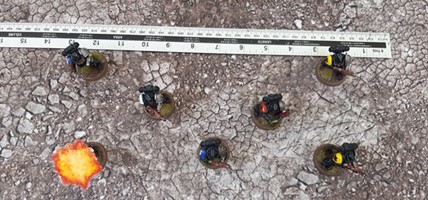
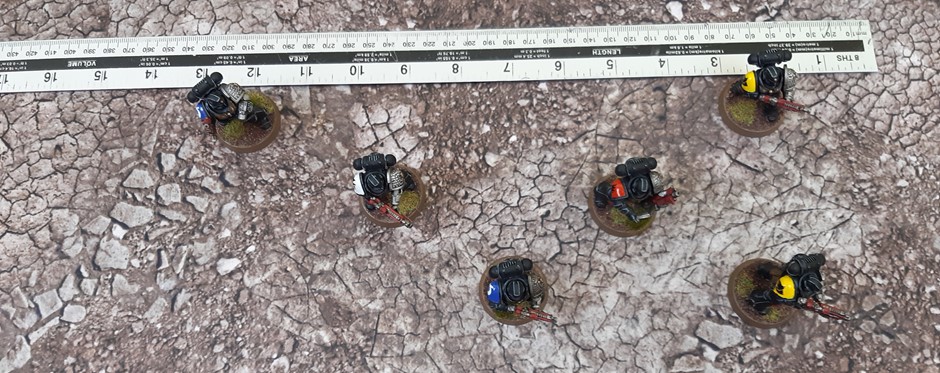

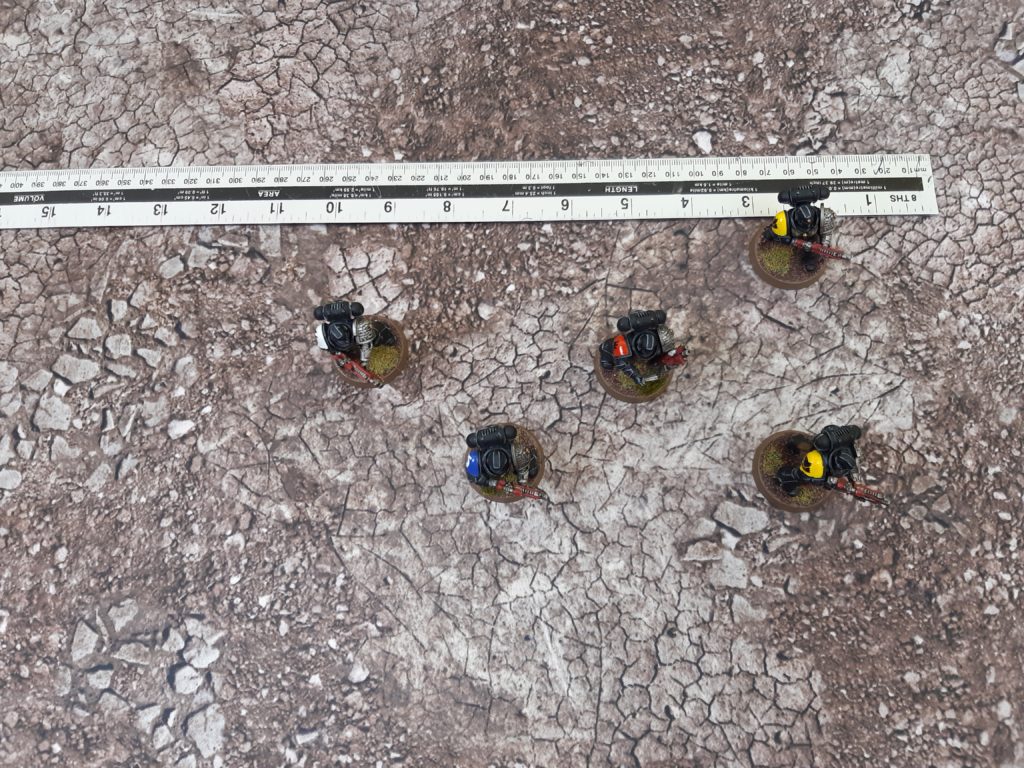
This formation has the advantage of a wider footprint than the ranked lines shown below. This could be useful for increasing the charge distance to more valuable units behind the diamond formation.
Ranked Lines
Another alternative to the diamond formation is to use two staggered lines of 5 models, such as shown below.
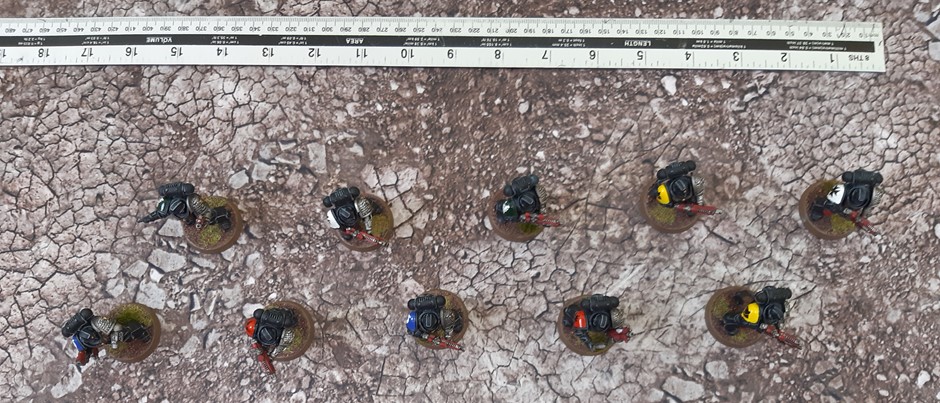
This creates a line length almost identical to the diamond formation above, reaching about 16-17″. However, this line is not as susceptible to unit coherency issues, as you can remove casualties along the line until you have 5 models remaining, without risking any coherency losses to the unit.

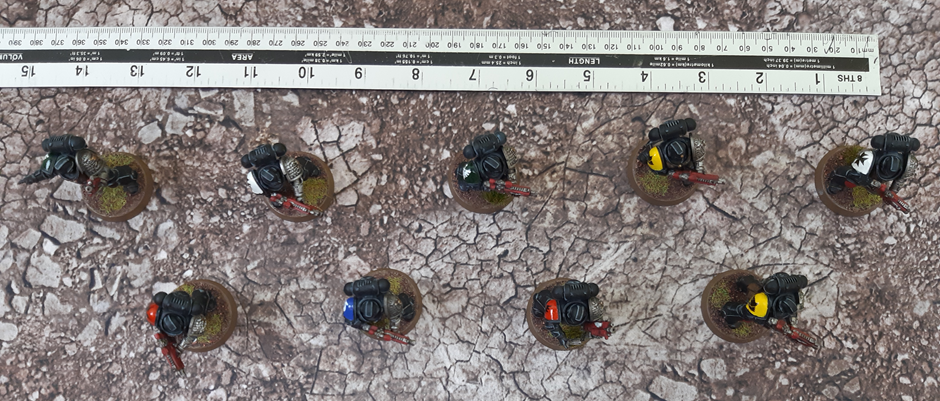
At the moment, the staggered line looks to provide maximum unit length and footprint, while minimising the chance of coherency casualties in the squad.
I’m sure as we get into the swing of 9th edition, more nuance with unit positioning and movement will emerge.
And remember, Frontline Gaming sells gaming products at a discount, every day in their webcart!



units of 10 were never the issue … units of 30 or 40 irregulars covering a line acting as very experienced skirmishers straight across the board were … especially when two objectives could be touched, an enemy tri-pointed (so the entire unit became immune to shooting) and a large chuck of the board was screened out to deep-strikers and planes
some of the “play for money” brigade even published tutorials showing how to use that tactic on these websites
now those tactics are worthless
you still need a screen at times, but not in such a strange manner
I’m not saying units of 10 were the issue, this was just highlighting how the changes to the coherency rule have affected screening and unit deployment. You are losing about 40% board coverage length in a unit of 10 and probably about the same in larger units.
Thanks for the great visual aid Michael.
Cheers! Glad it was useful.
This is awesome for two reasons:
1) I love the article and all the photos illustrating your points.
B) I’m not an expert in military history, but I’ve done my fair share of dabbling. I’ve read about discussions
from over the centuries about how to form battle lines. I realize this will come as an absolute shock to most of the community, but … none of those discussions ever considered the conga line (I’ll give you a minute to recover from that revelation). Those discussions did look a lot more like the one in this article.
I’m certainly not going to argue that 40k should completely adhere to realism. But a huge chunk of this game is about aesthetics. And conga lines don’t LOOK like a military formation. The pictures you presented above look like a battlefield formation. As a result of this rule, all of our games will look more like the battles we all picture in our heads. And to me, that sounds fantastic.
Thanks for the article!
You’re welcome!
I agree, I think it looks much better than units conga-lining across the board just to gain extra bonuses.
A conga line type formation called the Afghan Snake was used by British Troops during most of the Op HERRICK deployment to Afghanistan to reduce the chance of a single IED taking out more than one soldier and also so the troops could walk along the same path to reduce the chances of initiating an IED. Also, when in an ‘all round defence’ position troops would be in a ‘conga line’ style circle around the commander and rad op in the middle – effectively screening for them – so conga line is actually realistic in some aspects…
There is one other possible line formation that gives you a little more length. Hard to explain without diagrams, but in essence, you form your squad of 10 into 2 5-man trapiziums. 2 ranks, but 6 guys in 1 row, and 4 guys in the other. The downside is there is a weak point in the middle, so after loosing 4 guys, taking them from 1 side, the 5th has to be taken from the other side.